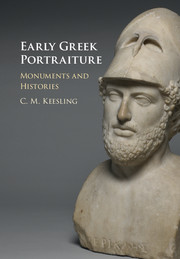Crossref Citations
This Book has been
cited by the following publications. This list is generated based on data provided by Crossref.
Baltes, Elizabeth P.
2018.
Challenging Narratives: Arthur Ashe and the Practice of Counter-Monumentality on Richmond’s Monument Avenue.
de arte,
Vol. 53,
Issue. 2-3,
p.
31.
Kristensen, Troels Myrup
2018.
Mobile situations:Exedraeas stages of gathering in Greek sanctuaries.
World Archaeology,
Vol. 50,
Issue. 1,
p.
86.
2018.
Books Received.
The Classical Review,
Vol. 68,
Issue. 1,
p.
293.
Rask, K.A.
2020.
Familiarity and Phenomenology in Greece: Accumulated Votives as Group-made Monuments.
Archiv für Religionsgeschichte,
Vol. 21-22,
Issue. 1,
p.
127.
Spelman, Henry L.
2021.
Classicising ‘Pindar’: Quotation, Canonisation and Early Reception.
Trends in Classics,
Vol. 13,
Issue. 2,
p.
363.
Fisher, Mark
2021.
HEROIC DEMOCRACY IN HIGH RELIEF: POLITICAL LEGITIMACY AND MONUMENTAL IMAGERY IN FIFTH-CENTURY ATHENS.
Ramus,
Vol. 50,
Issue. 1-2,
p.
169.
Petraki, Zacharoula
2021.
Hero-cult in Plato’s Phaedo, Republic and the Laws.
Synthesis,
Vol. 28,
Issue. 2,
p.
e106.
Fischer-Bovet, Christelle
and
von Reden, Sitta
2021.
Comparing the Ptolemaic and Seleucid Empires.
Stewart, Andrew
2022.
Protesilaos, two ways.
Journal of Greek Archaeology,
Vol. 7,
Issue. ,
p.
269.
Kron, Colleen
2023.
How to Become Immortal and Ageless: Affording Belief in Epitaphs with Extraordinary Claims.
Archiv für Religionsgeschichte,
Vol. 24,
Issue. 1,
p.
281.





